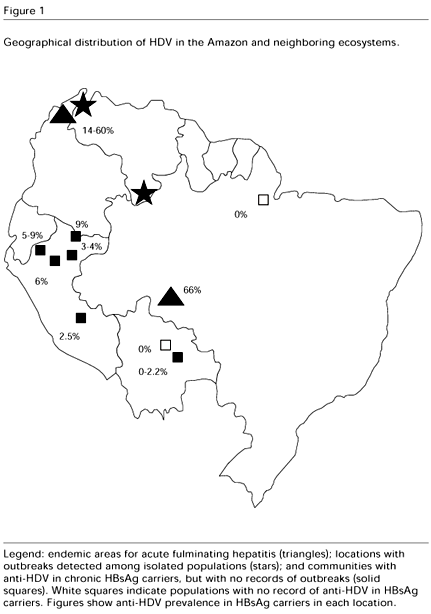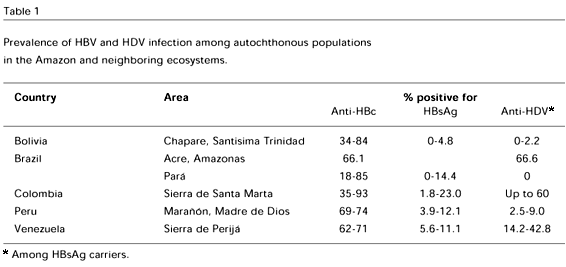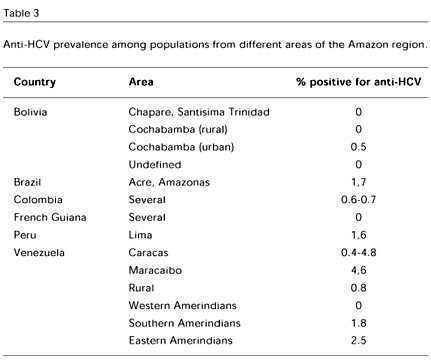On the last twenty years, viral hepatitis has emerged as a serious problem in almost all the Amerindian communities studied in the Amazon Basin and in other Amazon-related ecological systems from the North and Center of South America. Studies performed on communities from Bolivia, Brazil, Colombia, Peru and Venezuela have shown a high endemicity of the hepatitis B virus (HBV) infection all over the region, which is frequently associated to a high prevalence of infection by hepatitis D virus among the chronic HBV carriers. Circulation of both agents responds mainly to horizontal virus transmission during childhood through mechanisms that are not fully understood. By contrast, infection by hepatitis C virus (HCV), which is present in all the urban areas of South America, is still very uncommon among them. At the moment, there is not data enough to evaluate properly the true incidence that such endemicity may have on the health of the populations affected. Since viral transmission might be operated by mechanisms that could not be acting in other areas of the World, it seems essential to investigate such mechanisms and to prevent the introduction of HCV into these populations, which consequences for health could be very serious.
Viral Hepatitis; Hepatitis; South American Indians; Amazonian Ecosystem





